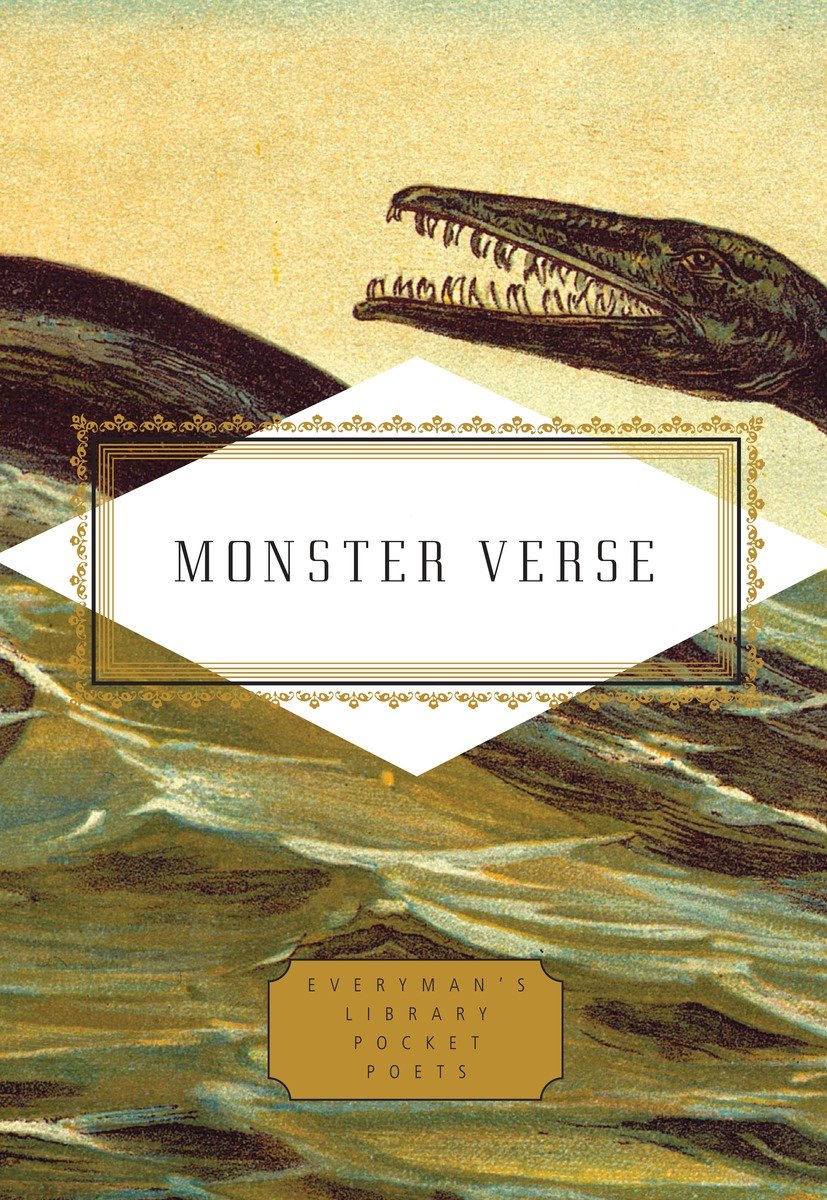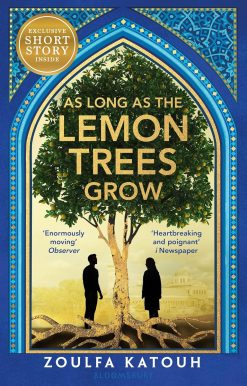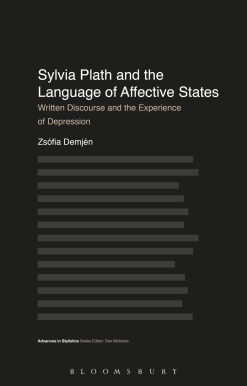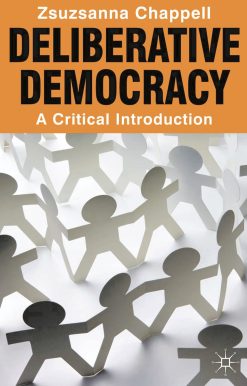No gift registry found click here to create new registry
Cart contain Gift Registry Items cannot add products
Monster Verse: Poems Human and Inhuman
16.00 JOD
Please allow 2 – 5 weeks for delivery of this item
Add to Gift RegistryDescription
Monster Verse: Poems Human and Inhuman brings to life a colorful menagerie of fantastical creatures from across the ages. Humans have always defined themselves by imagining the inhuman; the gloriously gruesome monsters that enliven our literary legacy haunt us by reflecting our own darkest possibilities. The poems gathered here range in focus from extreme examples of human monstrousness—murderers, cannibals, despotic Byzantine empresses—to the creatures of myth and nightmare: dragons, sea serpents, mermaids, gorgons, sirens, witches, and all sorts of winged, fanged, and fire-breathing grotesques. The ghastly parade includes Beowulf’s Grendel, Homer’s Circe, William Morris’s Fafnir, Lewis Carroll’s Jabberwock, Robert Lowell’s man-eating mermaid, Oriana Ivy’s Baba Yaga, Thom Gunn’s take on Jeffrey Dahmer, and Shakespeare’s hybrid creature Caliban, of whom Prospero famously concedes, “This thing of darkness I acknowledge mine.” Monster Verse is both a delightful carnival of literary horror and an entertainingly provocative investigation of what it means to be human.
Additional information
| Weight | 1.26 kg |
|---|---|
| Dimensions | 1.83 × 11.13 × 16.44 cm |
| PubliCanadation City/Country | USA |
| Format | |
| Language | |
| Pages | 256 |
| Publisher | |
| Year Published | 2015-9-15 |
| Imprint | |
| ISBN 10 | 0375712402 |
| About The Author | TONY BARNSTONE is the Albert Upton Professor of English Language and Literature at Whittier College, California. Author of numerous books of poetry, includingTongue of War: From Pearl Harbor to Nagasaki, winner of the John Ciardi Prize in Poetry, he is also a distinguished translator of Chinese poetry and literary prose, and editor of the Everyman's Library Pocket Poet anthology Chinese Erotic Poems. MICHELLE MITCHELL-FOUST is the author of two poetry books and winner of numerous awards including a Nation "Discovery" Award, the Columbia University Poetry Prize, the Missouri Arts Council Biennial Award, and an Academy of American Poets Prize. Her work has appeared in The Nation, The Washington Post, Antioch Review, and The Colorado Review. She lives in Gold Beach, Oregon. |
| Table Of Content | Introduction: Distorting Mirrors, Split Selves, and the Origin of MonstersALIENS AND HUMAN MONSTERSNEIL GAIMAN The Day the Saucers CameSTEPHEN KING The Dark ManCALEY O’DWYER My Parents Were MonstersELIZABETH BISHOP The Man-MothNIN ANDREWS The Invisible GirlRICK BURSKY The Man with a Hole in His HeadTONY BARNSTONE Nightmare KissWILLIAM BAER MonsterWILLIAM SHAKESPEARE Strange Bedfellows: Caliban and Trinculo (From The Tempest)DENNIS COOPER Ugly ManANTHONY MADRID The Milk OneALICE NOTLEY From The Descent of AletteAUGUST KLEINZAHLER MonstersCHRIS DAVIDSON My Son Throws Sticks in the RiverPATRICIA SMITH BrideEDWARD FIELD The Bride of FrankensteinJEANNE MARIE BEAUMONT BrideSUZANNE LUMMIS To His Shy Mistress (Broken Rules Series)GRANT HIER The Surgeon Turns the Scalpel on HimselfMEAGHAN REYNOLDS Lilith to EveSAMANTHA WOEHL Eve on ExodusMICHAEL HULSE The Secret HistoryTHOM GUNN Hitch-HikerJOHN FITZGERALD TacomaBRYAN DIETRICH Lizzie BordenANON. From The Death of King ArthurROBERT BROWNING The LaboratoryCHARLES HARPER WEBB Manpanzee,JAMES TATE The CowboyALEX MORRIS SignsJIM BARNES On Hearing the News That Hitler Was DeadTOMASZ RO´ZYCKI Ants and SharksWITCHES, WIZARDS, MAGICIANS, AND FAERIE CREATURESMADISON CAWEIN The Town WitchPAMELA MCCLURE Witch LamentLI HE A Piece for Magic StringsORIANA IVY Baba YagaREBECCA DUNHAM Encaged, as by God’s Good RageROBERT FROST The Witch of CoosPIERRE DE RONSARD Invective Against Denise, a WitchWILLIAM SHAKESPEARE The Weird Sisters (From Macbeth)JAMES WELDON JOHNSON The White WitchANDREJS PUMPURS From BearslayerJ. W. DEFOREST The Monsters Dance (From The Gentle Earl)MIROSLAV HOLUB Zito the MagicianANON. From The Sultan of BabylonJ. R. R. TOLKIEN Troll sat alone on his seat of stoneTOM SLEIGH From New York American Spell, 2001OVID Macareus’s Tale of Circe’s Island (From Ovid’s Metamorphoses) BAI JUYI The Man Who Dreamed of FairiesJOHANN WOLFGANG VON GOETHE Erl-KingNUALA NI´ DHOMHNAIL The Fairy Hitch-HikerTHOMAS CAMPION Thrice tosse these Oaken ashes in the ayreA. E. STALLINGS Fairy-Tale LogicBESTIARYJEANNINE HALL GAILEY Here There Be MonstersSTANLEY MOSS The Man TreeJORGE LUIS BORGES To the MirrorTED HUGHES WodwoMICHELLE MITCHELL-FOUST Aries at Mulling ManorMICHAEL LONGLEY SpiderwomanCHARLES BAUDELAIRE To Each His ChimeraALFRED, LORD TENNYSON The KrakenGWENDOLYN MACEWEN The Death of the Loch Ness MonsterHOMER The Sirens (From The Odyssey)JUAN FELIPE HERRERA La SirenaMARIANO ZARO Sireno / MerboyBISHOP THEOBALDUS From The Bestiary: Sirens, The HonocentaurGUILLAUME APOLLINAIRE From The Bestiary; or Orpheus’ Procession: The Serpent, Jellyfish, Sirens, The OctopusROBERT LOWELL From MermaidANNIE FINCH The Last MermotherALLYSON SHAW Mermaid SurgerySTEPHEN TRASK Origin of LoveANON. HAWAIIAN The Woman Who Married a CaterpillarNED BALBO A Creature in LoveROY MASH Creature from the Black LagoonEDMUND SPENSER The Quelling of the Blatant Beast (From The Faerie Queene)OSCAR WILDE From The SphinxKRYSTAL VALLADARES MedusaROBERT OLEN BUTLER MedusaLOUISE BOGAN MedusaBISHOP PATRICK OF IRELAND Of Men Who Turn Themselves into WolvesCARSEN WEST Brother, SisterCHRISTOPHER MERRILL The ReunionBONNIE JO STUFFLEBEAM The WerewolfWILLIAM BLAKE The TygerLAWRENCE RAAB Attack of the Crab MonstersEDGAR ALLAN POE The Conqueror WormTESS TAYLOR The VisitorJENNIFER CLEMENT ScarecrowALLEN GINSBERG The Lion for RealJOSHUA DAVIS The Patchwork HorsesCATHERINE TUFARIELLO Bête NoireERIC ORMSBY AntlionWILLIAM MORRIS Regin Tells of Fafnir’s Transformation (From The Story of Sigurd the Volsung)APOLLONIUS OF RHODES The Never-Sleeping Dragon, Guardian of the Golden Fleece (From Jason and the Argonauts)ILYSE KUSNETZ The Birth of GodzillaHOMER The Cyclops (From The Odyssey)ISHMAEL REED The Black CockANON. Beowulf Battles Grendel (From Beowulf)LEWIS CARROLL JabberwockyTHEODOR GEISEL (DR. SEUSS) Mr. GrinchAcknowledgments |
| Excerpt From Book | INTRODUCTION: DISTORTING MIRRORS, SPLIT SELVES, AND THE ORIGIN OF MONSTERSTo be a monster is to be inhuman. Or to be a monster is to be all-too-human. Eitherway, in order to talk about monsters, one first must talk about what it means to be human.For the Chinese, the idea of the human goes back to Confucius.He used the word ren, whichmeans ‘‘man’’ or ‘‘human,’’ to name the values that make a just and moral being, such as filial piety of child to parent, loyalty of citizen to ruler, just treatment of citizens by rulers, and reciprocity – treating others as you would wish to be treated by them. Most world religions have a similar notion of reciprocity. Even when the reciprocity is bloody, as in the Babylonian and Jewish notion of ‘‘an eye for an eye,’’ it functions as an attempt to limit vendettas: take only one eye for the loss of yours, in other words. Out of such ideas comes the entire legal justice system, as well as the immensely complex set of balanced and reciprocal interactions thatmake up our daily social life. The monstrous, then, is often that which is outside such social codes. In Beowulf, the monster Grendel is much like the humans: he is a warrior for his kind, he lives in a hall like those he kills and terrorizes, he is loved by his mother just like the Danes, but he dwells outside of human boundaries and so is referred to as a ‘‘borderdweller.’’ One way in which he dwells on the border is that he kills others outside of human codes: he refuses to pay the ‘‘were-gild’’ (the ‘‘man-price’’) for those he slaughters. Killing is not monstrous; that’s what warriors do. Killing without reciprocity, killing without law, is what makes Grendel a monster in men’s eyes.Modern theories of social justice originated from the idea that just societies balance social needs with the good of the individual person, and that humans have certain inalienable rights by nature. In other words, to value humans is our human nature, and the devaluation of humanity – by horrendous individual crime or tyrannical government – is unnatural and inhuman. To be human, in other words, is to be humane, and to be inhumane is to be monstrous.On the other hand, our deepest human drives can be misconceived as inhuman, simply because they are wild, lawless, unrepressed, Dionysian instead of Apollonian. Our battle with these drives is often projected out of the self as a battle with a monster, as in the case of Spenser’s Redcross Knight who crosses the landscape battling manifestations of psychological excess, which is to say ‘‘sin.’’ In William Morris’ retelling of the Norse Saga of the Volsung, Fafnir kills his own father and takes possession of mountains of elf-gold, but his greed and lust for power are so monstrously exaggerated that he suffers a physical transformation and becomes a dragon. The pages of this anthology are filled with such Grinchy nasty-wastiness and burbling Jabberwocky rage, with cannibalistic werewolf hunger and tygerish pride and Promethean aspiration, all manifesting the monstrousness of human nature.These internal battles with human drives may be why the image of the mirror figures in so many monstrous tales. In Jorge Luis Borges’ poem ‘‘To the Mirror’’ it is a kind of vampire that sucks our life and luck away by duplicating us, by showing us to ourselves. Mirror, mirror on the wall, who’s the most monstrous one of all? In William Baer’s poem ‘‘Monster,’’ when a slinking, creeping creature sneaks into the narrator’s car and looks into the rearview mirror, the face reflected back is his own. He is monstrous because he hates himself, because he feels like an outsider. The mirror is a literalizing of the idea of the split self. Perhaps we are most monstrous when we are so alienated from ourselves that we feel certain we are unlovable.Monsters truly are hard to love, since it is a risky thing to sleep with them. Flippered and dripping, will he take you to the Black Lagoon to drown, or be your handsome man in the day and then sneak off to be a bloated giant caterpillar at night? Will you freeze under her baleful gaze until you turn to stone? What kind of relationship can you have, when your gaze distorts her: ‘‘Why do you keep creating us half-human,/with bat wings, dragon scales, luminous green skin,/as if you can’t appreciate ordinary women anymore,/as if you fear what lies beneath?’’ ( Jeannine Hall Gailey’s ‘‘Here There Be Monsters’’). You try to accept her, but can’t. After all, you’re only human. Or she tries to accept herself, but can’t, as in Allyson Shaw’s sestina ‘‘Mermaid Surgery,’’ where it doesn’t matter that she is ‘‘a waking sailor’s dream/ . . . the prettiest in the sea,’’ because what she really wants is feet. How can you love what doesn’t love itself ? It is dangerous to take a border-dweller to bed.The case of multiple murderer Jeffrey Dahmer is a stunning example of love distorted into the monstrous, as he was unable to love the men whom he wanted to love while they were conscious, while they were most human. It’s an odd fact, according to psychiatrist Helen Morrison, that serial killers find it difficult to tell if a human being is alive or dead. This ‘‘misunderstanding’’ might be the most profound example of the shift from humanity to inhumanity on the part of these murderous border-dwellers. Or perhaps Dahmer’s strong religious upbringing was so much at odds with his sexual preferences that hewas unable to have healthy sexual relationships. He opted instead to ‘‘keep’’ the men he brought home and ate. He took his others into himself through ingestion, trading one cultural taboo for another.‘‘Hitch-Hiker,’’ a poem from Thom Gunn’s Troubadour sequence that gives voice to Dahmer, expresses this grotesque romantic quandary: ‘‘I know that I must keep you, and know how,/For I must hold the ribbed arch of your chest/And taste your boyish glow.’’What was monstrous about Dahmer the human being was not visible to the naked eye. But had he been a character in a Shakespearean tragedy, rather than a quiet man working in a chocolate factory and walking the streets of America’s midwest, he might have exhibited the impossible possibilities of the body, as do some of the monsters in this anthology. He might have sported a horn, or an extra leg, or a growth he shared with his conjoined twin. Or he might have been hybridized, like William Shakespeare’s Caliban of The Tempest, the child splice of a witch and a devil: ‘‘What have we here? a man or a fish?’’ Shakespeare’s Caliban recalls the humanesque forms of old, representing fears of what humans are capable of. These monsters are grotesques: exaggerations of ourselves descended from the creatures in the paintings in blood-thirsty Emperor Nero’s dark grotto in ancient Rome. They are figures suffering incongruity, hybridity, doubleness, and metamorphosis, into which border-crossers Casanova and the Marquis de Sade couldn’t resist carving the graffiti of their own names. Caliban’s form would have been at home among these distorted forms in the dark underground.Grotesques are often reversed images of the exaggerated forms of heroic and beautiful archetypes. The impossibly buff and sexy bodies of supermen and comic book beauties are distorted reflections of the grotesque forms of the villains they fight: Superman becoming dangerous in the shattered glass reflection is Bizarro Superman. Similarly, the act of exaggerating in monstrous poetry is sometimes a distorted reflection of the hyperbolic praise metaphors of heroic and love poetry. Thus, in Suzanne Lummis’ wonderfully irreverent take on the blason (the form of poetry in which the female is praised in pieces, body part by body part, through exaggerated comparisons), the lover’s ‘‘eyes [like] deep pools,’’ rose cheeks, and ruby lips turn ‘‘my love’’ into ‘‘my ‘monster.’’’ When ‘‘bees engage/the roses of your cheeks’’ and ‘‘Small/insects drown in those azure pools’’ we laugh and the frustrated suitor weeps. The ideal is the monstrous, with just a shift of perspective.Lummis’ portrait of a monstrous Shy Mistress and Shakespeare’s description of Caliban remind us that monsters make for a lucrative circus. Humans cannot resist a peek at human physical possibility run amok. When they see themselves in the deformity, rest assured, they feel intensely, as we find in Alice Notley’s marvelous and mythic The Descent of Alette, wherein the speaker believes she is watching her own head being detached from her body: ‘‘I didn’t’’ ‘‘want to look’’ ‘‘but’’ ‘‘of course I had to.’’ We know that we are up against the sublime when we are horrified but want to laugh, when we empathize but want to run.So it is in Mariano Zaro’s heart-wrenching poem ‘‘Sireno /Merboy,’’ a portrait of a boy with a skin condition, ‘‘Ichthyosis,’’ that makes him fishlike, point-headed, hairless, with white scaled skin that he asks the narrator to medicate. The narrator admits, ‘‘There is something repulsive about it,/something that clogs the back of my throat,/but I keep rubbing his skin/as if I deserve the repulsion.’’ This Merboy endures his humanity by poulticing the condition that makes him feel inhuman, cracked and scaled like a creature of the sea. He suffers from his metamorphosis and we cannot look away from that all-too-human pain.Yet the Merboy is gentle, unlike other members of homo oceanus we have heard of, such as the sirens of Homer who cry fatally to bewitch men sailing by. Or consider Robert Lowell’s mermaid, ‘‘Rough Slitherer in your grotto of haphazard,’’ a cruel portrait of his wife, Guinness heiress Lady Caroline Blackwood. Here is mermaid as drunken man-eater, whose monstrosity is directly proportional to the erotic power she wields. For female monsters, that which makes them monstrous is too often that which sets them apart from male expectations and desires. They are distorted in the mirror of the male gaze. Thus, like mermaids, witches are defined cosmetically. The witch is often presented as horrible because hideous – the hag or the crone. Sometimes, though, as in the case of Circe, she is as beautiful as a goddess, and it’s her willingness to assert her sexual power over men that is mythologized as devilish. As James Weldon Johnson puts it in ‘‘The White Witch,’’ a thinly veiled warning about race and sexuality at a time when sleeping with a Caucasian woman could get an African-American man lynched, ‘‘Like nursery children you have looked/For ancient hag and snaggle-tooth;/But no, not so; the witch appears/In all the glowing charms of youth.’’ But the White Witch’s red lips burn, her golden hair binds, and her magnetic eyes suck out her lover’s vital force. In the patriarchal tradition, the witch is evil because she steals the male prerogative of power.This witch and all the witches in this collection have powers that frightened us when we were children and we encountered them in fairy tales. We all remember the story of a sister and brother sent away, heading toward peril in the form of a cannibalistic witch who lures children with her delicious house. She is surrounded by the other beasts in the tale: the quick-eyed ones with sharp beaks, and the very human monster who sent the children out into the darkwood in the first place. Pamela McClure alludes to a version of ‘‘Hansel and Gretel’’ in her ‘‘Witch Lament,’’ and she further complicates the old mythology by reminding her readers that the witchhas her problems, too. She’s lonely, dwelling on the margins, a woman in exile. ‘‘Her heart swings with the cage, loses its beat, left for dead/In some other tale, shoe dragging. What a hag.’’ McClure’s witch is a cannibal who still manages to be a sympathetic character. She reminds us that goodness (and evil) are sometimes situational. She is as sympathetic and menacing as Oriana Ivy’s Baga Yaga: ‘‘Here’s the heart of a deer/killed in place of a young girl/I forgive with it.’’ At the end of the poem, we learn that Ivy’s witch is a border-dweller, too, one with two hearts, only one requiring love.Ivy’s ‘‘Baba Yaga’’ suggests that our human battles involve deadly trade-offs and that ‘‘morality’’ can be a relative term. A hall of monsters is a hall of mirrors. Is it necessarily a bad thing to be monstrous and to challenge morality? Friedrich Nietzsche’s work seeks to liberate us from socially definedmorality by postulating that ‘‘God is dead.’’ He prefers the monstrous figure of a Cesare Borgia to that of the Arthurian hero Parsifal because at least Borgia acts upon his deepest instincts instead of denying them. For Nietzsche, in other words, to be human is to be in touch with our deep drives, what Freud would call the Id, and not to deny them in favor of socially prescribed moral restrictions. As William Blake puts it in ‘‘The Garden of Love,’’ when he finds that a Chapel has been built there: ‘‘And the gates of this Chapel were shut,/And ‘Thou shalt not’ writ over the door,’’ and the flowers had turned to gravestones, ‘‘And Priests in black gowns were walking their rounds, /And binding with briars my joys & desires.’’This introduction began with three questions: What is a monster? What does it mean to be inhuman? And what does it mean to be human? Are we human when we kill off our inner Calibans and Dahmers, our unholy, unhealthy desires and hungers – or is that when we lose our human nature? Are we more human when we live in the mind as in a high white porcelain heaven, far removed from smut of lust and need of greed? Or does being human mean to be natural and unrepressed, to free our joys and desires from the priestly briars that bind them? Does it mean that we cast down the tyrannical superego and live unapologetically according to our natures (and kill our monster fathers)? Either way, we are living on the border. Robert Louis Stevenson’s characters Jekyll and Hyde were the literary/physical embodiments of this human/inhuman quandary. Perhaps, as Jung had it, this vision of the self emerges from the primal split. It is the division between reason and yearning, mind and desire, good and evil, in the falling away from Edenic unity. Or it is the split from genderless unity intomale and female in Plato’s genesis, where androgynous creatures were split into two by Zeus for trying to storm heaven. For Plato, all love – whether lesbian, hetero- or homosexual – comes from the desire of these split selves to meld into each other and find wholeness.The hero, then, is the one called to heal this split world which is the split self. Thus the hero who descends into the underworld is really the self going down into the mind, and the winged, fanged, gibbering, firebreathing monsters the hero battles are manifestations of our repressed drives, drives that have turned exaggerated, distorted, monstrous because of the weight with which we have repressed them. And perhaps if we battle those monsters, we find the treasure that can heal the partial self and make it whole. The Jesus tale is one of many such descents in world religions and mythology (Inanna and Ishtar and Isis) designed to heal the spiritual split. As Plato puts it in the Symposium, ‘‘the innate eros of humans . . . draws us to the primeval state’’ that ‘‘joins two into one, healing humanity’s nature.’’ Through love, the self can look boldly into the mirror and accept the reflection there as a necessary familiar. We are no longer partial beings dwelling on a psychological border. When we return to the light, we are transformed, made more human by battling and ultimately embracing as part of our humanity that which we called inhuman. As Prospero said of Caliban: ‘‘this thing of darkness I acknowledge mine.’’TONY BARNSTONE AND MICHELLE MITCHELL-FOUST |
| series |
Only logged in customers who have purchased this product may leave a review.
Related products
-
On backorder 2-5 Weeks to Arrive
Add to Gift Registry8.99 JOD -
On backorder 2-5 Weeks to Arrive
Add to Gift Registry -
On backorder 2-5 Weeks to Arrive
Add to Gift Registry -
Low stock
Add to Gift RegistryGirl Online: Going Solo
Paperback
7.99 JOD






Reviews
There are no reviews yet.